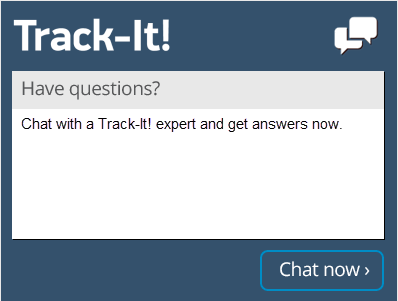Five Ways Your Help Desk Software Improves Business Operations
One of the most important decisions a help desk team can make is deciding which software system to use. This decision is even more critical in today’s world with so many businesses forced to go remote. Help desk software that simplifies the help desk technician’s work but automating repetitive tasks can dramatically save time and money for the organization. Properly-executed features and tasks can improve the service provided by the help desk and result in higher end-user satisfaction. Help desk software that can process and provide insights into the data that the help desk generates can also help the entire organization find ways to improve and become more efficient. A well-designed help desk software suite can bolster the entire company with both direct and indirect benefits. Let’s take a look at Five Ways Your Help Desk Software Improves Business Operations.
Benefit 1: Empower End Users to Help Themselves
When users can resolve issues and perform actions on their own, the end results include fewer help desk tickets, less repetition of effort, and lower levels of frustration for both the help desk and the end-users. The best help desk software suites provide features that permit end users to answer their own questions, access pertinent regulations and processes, and submit help desk tickets online via multiple formats.
Converting emails into help desk tickets permits users of any technical skill level to notify the help desk when an issue arises. This makes it much easier for less technical users to submit tickets as well as allowing all users a quick and easy way to submit an issue.
A self-service web portal routinely updated with FAQs, knowledgebase articles, and important announcements about upcoming events or network maintenance is a great way to let users find the information they need to handle their own issues or allow them to enter their own tickets. A searchable self-service portal can prevent duplicate help desk tickets and help manage expectations on when issues will be resolved.
Once a ticket is submitted, the help desk software system can automatically categorize the nature of the ticket, route the ticket to the proper technician, assign a priority and send automated email notifications with important information such as expected response times and external links where the user can find additional information as well as automatically notify the technician to whom the ticket was assigned.
Feedback from users can highlight areas where the help desk needs to improve. Providing users with post-ticket surveys, in addition to recording feedback within help desk tickets and related correspondence, can yield data that the help desk can use to determine when and how to update knowledge base articles, offer training courses for users, provide additional training their technicians, hire additional technicians, update the company’s IT assets, or take corrective action to address behavioral issues.
Benefit 2: Track and Update IT Assets
Robust help desk software platforms can also assist help desk teams with IT Asset Management. By using scanners or smartphone apps, help desk technicians can scan barcoded hardware assets and access hardware specifications when they’re away from their desks. Automated asset discovery can help keep track of networked assets or even notify the help desk when new assets are connected to the network. Help desk software with IT Asset Management can help maintain a comprehensive and automatically updated database of all IT assets, as well as provide functionality to analyze the data with customizable reports.
Help desk software suites can also automate and simplify several aspects of installing software patches, upgrades, and new software suites. The ability to schedule patches based on priority and company hours can reduce vulnerabilities and downtime. Remote deployment functionality allows help desks to install new software or operating systems on network-connected devices. When paired with an inventory database, this functionality can allow help desks to ensure all their systems are up to date and compliant with company regulations as well as federal and state laws.
Benefit 3: Display Data in Routinely-Generated, Simple-to-Understand Reports
Reports based on the data that help desks collect are valuable tools for both the help desk and for the departments that work alongside it. Identifying common technical problems allows the help desk to react by instructing users and technicians in those areas or to update related documentation or knowledge articles. Help desk reports that indicate problems with response times can be used to justify the time and costs associated with corrective actions such as hiring more technicians, updating IT assets, or providing additional training to help desk technicians. Simple-to-understand reports also help non-technical stakeholders remain aware of help desk progress, resource allocation, areas of improvement, and anticipated issues.
Different departments will track different data points so customizable reports allow help desks to tailor the information to their target audiences. Help desk technicians and their managers should be able to view their performance metrics to identify problem areas and improvement recommendations. Human Resource departments will want reports that justify personnel changes such as hiring, training, transferring, or terminating employees. Management stakeholders may want reports that clearly show the help desk’s effectiveness in terms of help desk tickets resolved, response times and user satisfaction.
Report generation can be automated and delivered via email or manually generated. Scheduling reports to be generated and distributed on specific days and times keeps stakeholders, managers, and technicians updated with current information. Properly-timed reports can also increase the efficiency of meetings that rely on help desk data to make informed, timely decisions.
Benefit 4: Keep the Organization Informed and Engaged Via Automated Communications
Help desk software can send notifications to remind technicians about pending help desk tickets and keep users informed regarding the status of their help desk tickets. This reduces the possibility of tickets being forgotten about and lessons the likelihood of user dissatisfaction. Automated notifications can also remind help desk technicians to follow-up on escalated tickets to avoid problems associated with the escalation.
Poorly-communicated software deployments can cost users significant loss of work and productivity when they are surprised by software updates or required reboots of their hardware. The help desk should provide network-wide communications regarding downtime and process-intensive installations to help users arrange their tasks around deployments. Early warnings of network-wide maintenance also gives the help desk an opportunity to answer questions and address concerns associated with the upcoming maintenance.
Benefit 5: Functionality to Promote Remote Operations
Help desk software suites that include supplementary mobile apps make remote help desk operations easier. Help desk technicians can access help desk tickets and other pertinent information when they’re away from their desk or visiting another office. Help desk apps that include barcode-scanning functionality can assist with asset identification and management.
The rise in remote workers also introduces security and logistical issues that the company must handle. Help desk software that keeps remote assets updated and remote workers engaged can reduce vulnerabilities and increase worker engagement. An updated self-service portal can include FAQs and detailed instructions on how remote users can keep their assets safe and adhere to applicable laws and regulations. Automated installations triggered from the help desk can keep remote assets patched and up-to-date. All of the data and feedback collected from remote users can highlight issues specific to remote workers and provide insights on how the help desk can better assist them.
How Track-It! Can Improve Business Operations
Track-It! help desk software is a robust software suite that provides features to improve help desk efficiency. Track-It! enables automation of tasks, including converting email messages into help desk tickets, automatic email notifications, patch management, software deployment, remote management, and report generation. Track-It! also provides functionality to track and detect IT assets connected to the company network as well as the Track-It! Mobile app for barcode scanning of physical IT assets. Track-It! is highly customizable, allowing the help-desk to schedule automated tasks, design reports suited for the specific target audience, and define automatic ticket prioritization and routing. Self-service capabilities include a self-service portal allowing users to submit their own tickets, check the status of existing tickets and utilize the company knowledge base to solve common problems on their own.
Contact us today to request a price quote, arrange for a free trial, or get answers to technical questions about Track-It! We are ready to demonstrate how our help desk software suite can improve your business operations.





